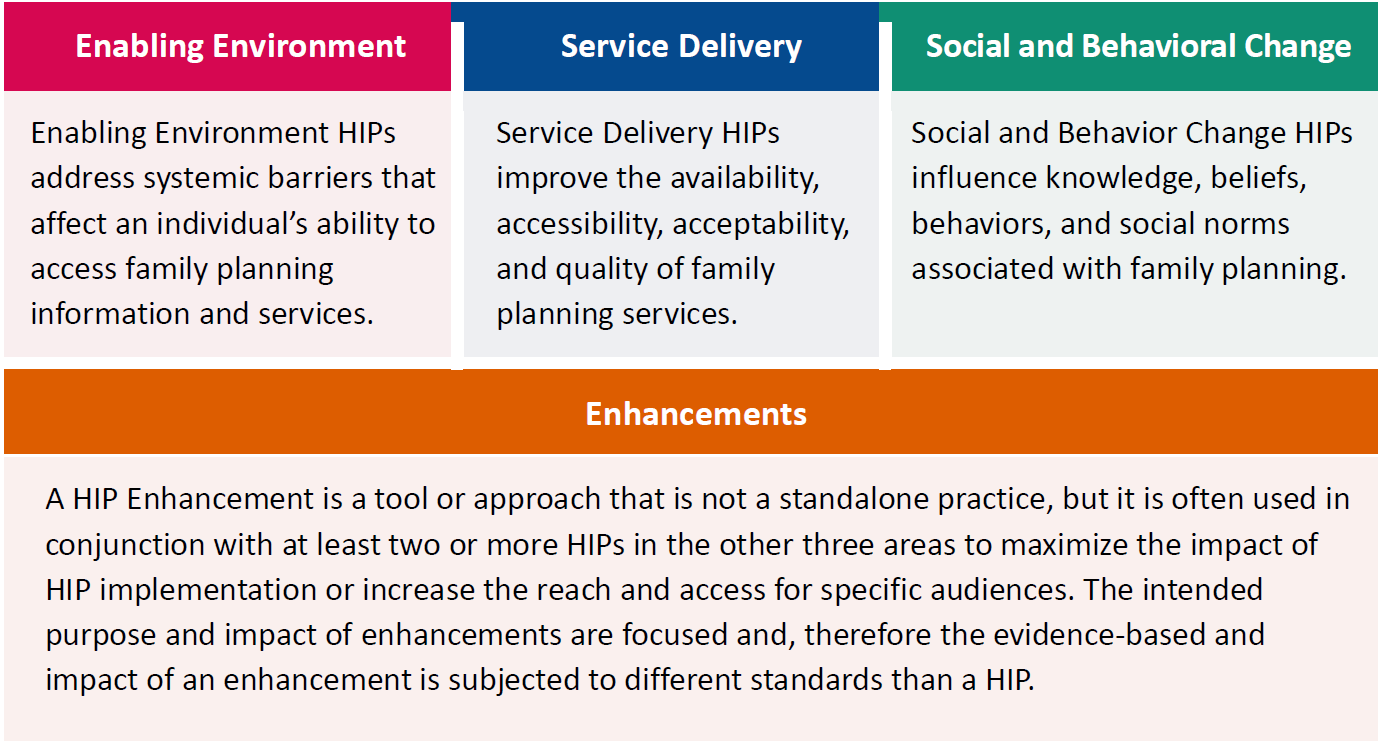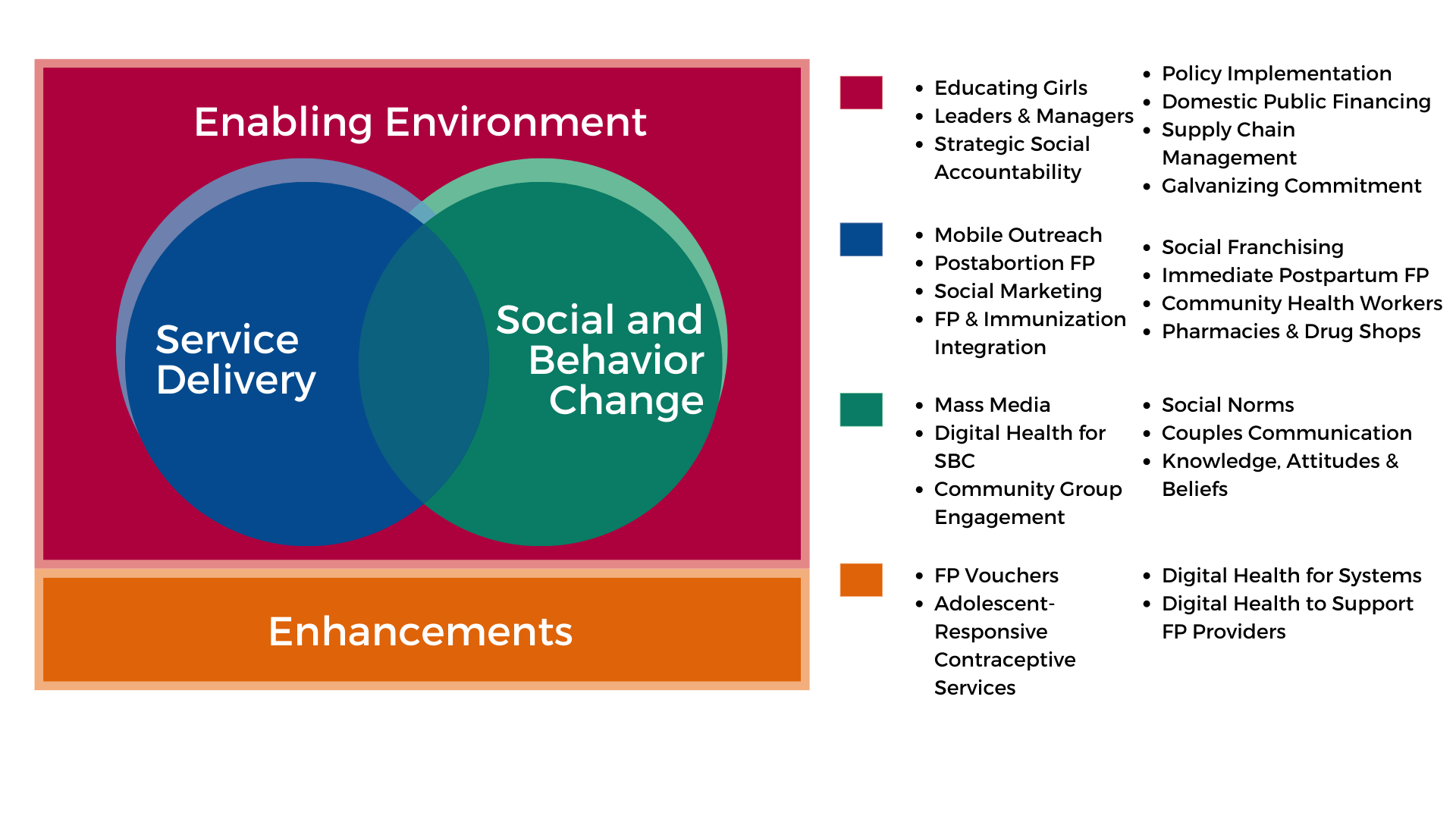Family Planning High Impact Practices List
High Impact Practices (HIPs) are a set of evidence-based family planning practices vetted by experts against specific criteria and documented in an easy-to-use format. A HIP is measurable and it should have demonstrable impact in achieving various family planning outcomes including: modern contraceptive uptake, reduction in unintended pregnancy, reduction in overall fertility, or at least one of the primary proximate determinants of fertility (delay of marriage or sexual initiation for adolescents, birth spacing, exclusive breastfeeding and postpartum abstinence). Vetting criteria also include: replicability, scalability (i.e., potential application in a wide range of settings), sustainability, and cost-effectiveness. HIPs are categorized as:

Service delivery and social and behavior change HIPs are further categorized according to the strength of the evidence base for each practice as proven or promising.


Enabling Environment HIPs
Service Delivery HIPs
Social and Behavior Change HIPs
Enhancement HIPs
Suggest Citation
Suggested citation: High Impact Practices in Family Planning (HIPs). Family planning high impact practices list. Washington, DC: The High Impact Practices Partnership; August 2022.
For more information visit: www.fphighimpactpractices.org, contact: www.fphighimpactpractices.org/contact/ or join the conversation with #HIPs4FP